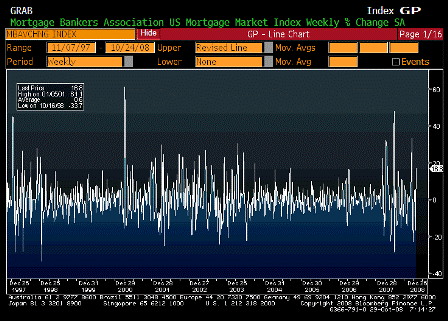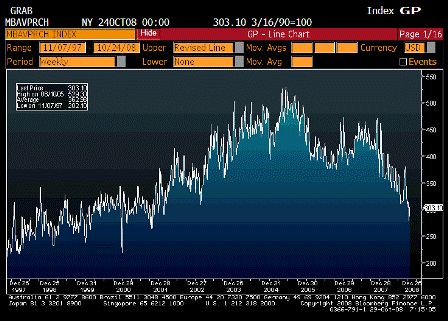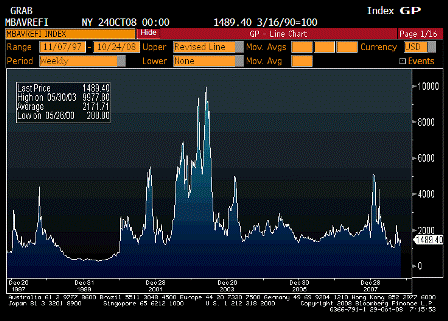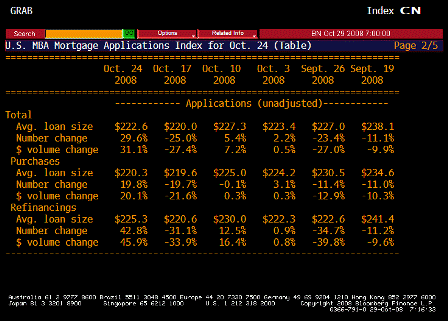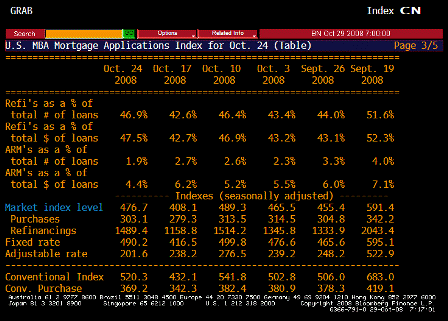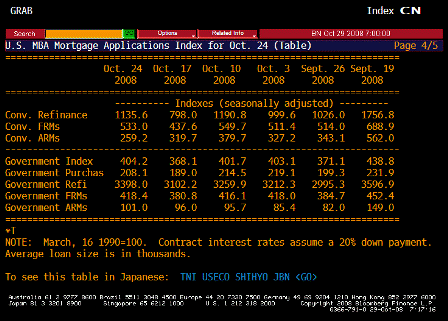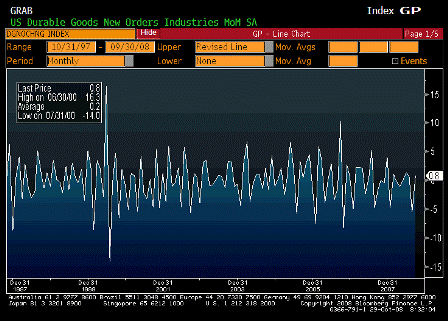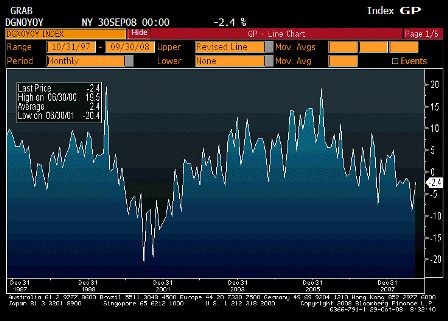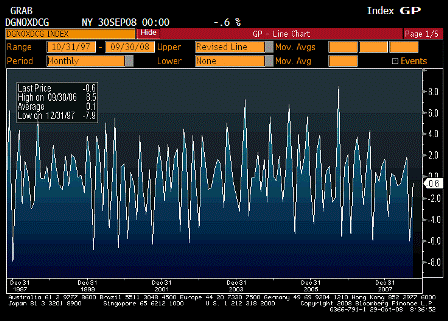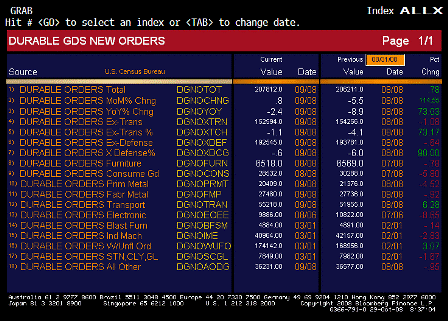Note the contractionary terms highlighted below:
Hungary Pays With Growth Prospects for IMF-Led Bailout Package
By Zoltan Simon
Oct. 29 (Bloomberg) — Hungary will meet euro-adoption term faster than previously planned after securing a 20 billion-euro ($25.5 billion) aid package to stabilize its recession-bound economy.
The country should adopt the euro “the faster the better,” Economy Minister Gordon Bajnai and Andras Simor, the head of the central bank told reporters today. The aid package will “unequivocally” stem the financial crisis in local markets, Bajnai said.
Hungarian stocks, bonds and the currency plunged this month because of concern that the country may have difficult financing its budget and current account deficits.
The aid package will help Hungary with its balance of payments and increase investor confidence by more than doubling foreign-currency reserves, Simor said.
The central bank, which raised the benchmark interest rate last week to 11.5 percent, the EU’s highest, from 8.5 percent to halt the currency’s plunge, will “think it over” on the direction of monetary policy after the rescue plan, Simor said. The bank continues to aim for price stability, he said.
To reduce country’s reliance on external financing, Prime Minister Ferenc Gyurcsany plans to cut spending next year by freezing salaries and canceling bonuses for public workers and reducing pensions. Hungary today also canceled all government bond auctions through the end of the year.
The standby loan, which Hungary can draw on as needed, will more than double the country’s 17 billion euros worth of foreign currency reserves, Simor said. The loan carries an interest rate of 5 percent to 6 percent, a standby fee of 0.25 percent annually and can be repaid in three to five years. Hungary can access the funds until March 2010, Simor said.
Part of the loan will be used to provide liquidity to banks, Simor said, without elaborating. Banks in Hungary have started to curtail or suspend foreign currency lending because of the difficulty in accessing euros and Swiss francs, the most popular foreign currency loans.
Euro applicants must keep inflation, debt and budget deficits within check. Hungary expects consumer prices to rise 4.5 percent, with a budget deficit at 2.6 percent of gross domestic product and declining debt next year.
[top]

